NarniaWebber Reviews ThreeSixty’s Narnia Stage Production
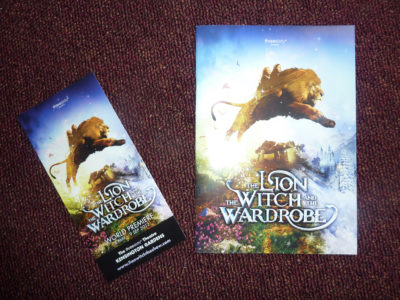 NarniaWebber ‘Icarus’ recently attended a performance of ThreeSixty’s new stage adaptation of The Lion, the Witch and the Wardrobe in London. You can view behind-the-scenes videos and order tickets at the official website. View the trailer here.
NarniaWebber ‘Icarus’ recently attended a performance of ThreeSixty’s new stage adaptation of The Lion, the Witch and the Wardrobe in London. You can view behind-the-scenes videos and order tickets at the official website. View the trailer here.
Overall, Icarus describes the play as “really great.” Here are some highlights:
- Although the progression of the story has been tweaked, most scenes follow the book almost word for word
- Like the Walden film, Lucy first discovers Narnia during the hide-and-seek game
- There is a nightmare scene where Lucy dreams of Tumnus being arrested by Maugrim
- Peter and Susan’s conversation with Professor Kirke is a lengthy scene
- Like the Walden film, Edmund actively tries to get his siblings to step into the wardrobe
- Father Christmas is included
- Peter’s shield has a red tree instead of a lion
- The scene where the Witch comes across a group of animals celebrating Christmas is included
- The Witch’s dwarf is never named in the play, but is called Ginarrbrik (a name invented for the Walden film) in the programme
- Giant Rumblebuffin smashes down the gates
REVIEW:
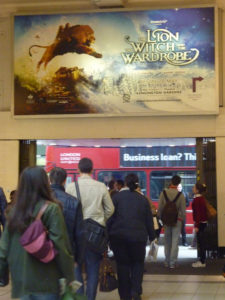 The following is my review of the new stage show adaptation of The Lion, The Witch and The Wardrobe which recently opened in Kensington Gardens in London, and which I was fortunate enough to attend last Friday. I am posting this in a separate thread to the earlier discussion on the production as my review is going to go into quite a bit of detail about the nature of the adaptation, so if you are wanting to go into the show entirely fresh and spoiler-free I would advise you to stop reading here. However if you would like to find out a bit more about the show then keep on reading. I honestly think it would be of benefit for most people to know a little more about the nature of the production beforehand, as I think this will then allow you to better appreciate the show on its own terms and will enhance your enjoyment.
The following is my review of the new stage show adaptation of The Lion, The Witch and The Wardrobe which recently opened in Kensington Gardens in London, and which I was fortunate enough to attend last Friday. I am posting this in a separate thread to the earlier discussion on the production as my review is going to go into quite a bit of detail about the nature of the adaptation, so if you are wanting to go into the show entirely fresh and spoiler-free I would advise you to stop reading here. However if you would like to find out a bit more about the show then keep on reading. I honestly think it would be of benefit for most people to know a little more about the nature of the production beforehand, as I think this will then allow you to better appreciate the show on its own terms and will enhance your enjoyment.
Another point to make before beginning my review is that i whilst i would consider myself fairly well versed when it comes to cinema, i could probably count the number of times i have ever been to the theatre on one hand, and the last of those occasions must of been well over 15 years ago. Therefore it’s hard for me to make much in the way of comparative judgment with other theatre productions and thus difficult to offer a truly informed opinion of the show’s quality as a standalone theatre production in its own rights, but I can of course offer you my opinion of the show in terms of it’s quality as a Narnia adaptation.
The third disclaimer to make beforehand which is worth noting is that apparently the general convention of theatre showings is that the first month of performances are considered to be “Previews” – effectively a grace period from the opening date which allows them to make any necessary tweaks to the production before the official theatre critics are allowed to formally review it, so this review is technically of a Preview performance. Whether or not they do go on to make any minor or even significant changes to the show i wouldn’t know, though i guess that is always the one thing with live theatre is that unlike the cinema no single showing of the stage show will ever be exactly the same as another.
So like I said, I went in with almost no prior knowledge of what to expect from the format of the production (or of the theatre in general) and at first I felt that this lack of prior experience with the general “language” of theatre (in terms of the style and format) did hinder me slightly in the early parts of the play as it took a while to fully tune-in to the way in which things were visualized and represented. But once i did I found it to be really good fun and thoroughly enjoyed it and would highly recommend it to any Narnia fan out there. As an adaptation it was very faithful to the original source material, save for a few moments early on which were cut for the sake of brevity, which i shall detail later on. There was almost nothing cut from the book, and also nothing added, changed or tweaked such as it was in the Walden movie. It was also very nice that quite a lot of the dialogue seemed to have been taken directly from the book and it was particularly delightful to see certain scenes and moments which were cut from the Walden movie brought back to life here.
I should also mention here that there was a lot more singing and dancing than i was expecting based on what I had read about the show beforehand. I had been expecting maybe 2 or 3 musical numbers dispersed throughout the show, but i think in the end there must have been about 8 or 9 different songs, maybe more. That said though, i would still say that it was not a “musical” adaptation of LWW – not only because the ratio of dialogue to music was very much in favor of the acting side rather than the singing side, but also because i feel that with a West-End musical you usually expect very grand productions with big sets and large ensemble casts, whereas this was not. For the most part it was much more basic with just the actors on the stage (such as you might expect from a more traditional theatrical play) with a limited number of props and some very clever use of lighting and visual projections to help set the scene.
The Show – Part 1
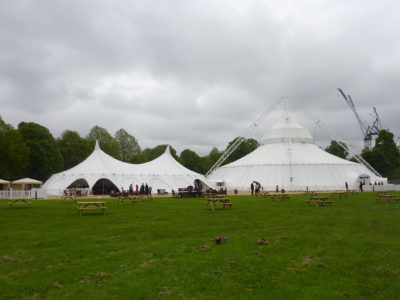 The show begins with the four Pevensie children walking out onto the stage with their luggage. The sounds of steam trains and a historical radio announcement as they emerge help to establish the period and location, but from there it literally goes straight into a game of hide-and-seek. I personally found this to be a somewhat jarring introduction for at least three different reasons, though as it turned out all three reasons proved to be largely unfounded concerns on my part.
The show begins with the four Pevensie children walking out onto the stage with their luggage. The sounds of steam trains and a historical radio announcement as they emerge help to establish the period and location, but from there it literally goes straight into a game of hide-and-seek. I personally found this to be a somewhat jarring introduction for at least three different reasons, though as it turned out all three reasons proved to be largely unfounded concerns on my part.
Firstly was the obvious fact that they had cut out a sizeable chunk of the book’s opening. Even though the book itself is fairly brief in its introduction (compared with say the movie) it felt somewhat odd to be cutting straight in at that moment. That said though, i think in the end it proved to be a wise choice to cut out much of the real world scenes. Whereas the Walden movie stretched out the handful of opening lines from the book into a much longer introductory sequence (but then had to compromise for time on certain scenes later on, one of which I’ll mention a bit later) here we get straight into the main element of the story, whilst allowing for the time saved to be dedicated ultimately more important moments later on.
The second reason this introduction initially unsettled me was because they had adopted a change originally made by Andrew Adamson’s movie straight away (i.e. that Lucy’s first entrance into Narnia is during a hide-and-seek game, rather than on her second visit as it is in the book). I had often wondered whether the popularity of the Walden movie would result in certain changes, interpretations and visualizations originating in the movie going on to become part of the accepted popular convention for all future adaptations such as often occurs with these things, but this did not prove to be the case here. With the exception of this one instance, the show did not contain any further moments that owe more to the movie than the book, and in some cases (such as with the design of Peter’s shield) they seemed to have gone out of their way to make it different to the movie (Peter’s shield here was a golden tree design on a red background).
The third main reason this introduction alarmed me, was because of the audience participation nature of the hide-and-seek game. After proposing a game of hide-and-seek to the others, Lucy takes to the centre of the stage whilst the other three Pevensies disperse into the audience. Lucy then (slightly breaking the fourth wall) instructs the audience to at first count along while she hides, and then after changing her mind, asks the audience to hide while she counts (or perhaps the other way round). Either way this had me worried that the whole thing was going to turn out to be kind of “pantomimey” though thankfully it wasn’t at all.
If I had been dreading a pantomime-like production at this point, it was quickly dispelled by Lucy’s first entrance into Narnia (barely a couple of minutes into the show) which helps to establish the tone of the production’s visual aesthetic which was actually a lot more interpretative and artsy than I had been expecting. The Wardrobe itself rises up from the centre of the stage when required, and after Lucy enters it for the first time she then kind of lifts up out of the top of the wardrobe on a wire, along with the coats in the wardrobe which also rise up around her, whilst both literal snow and high-wire suspended interpretative dancers representing the snow (and winter in general) fall around her. At the same time men on stilts with woody appendages representing the forest assemble beneath her (i guess you could convince yourself that they are supposed to be dryads or living trees in the Narnian tradition, but in reality they are just interpretative metaphors used to represent the woodland) and the Lamppost appears just to the edge of the stage. This is all probably considered to be fairly normal convention for theatre shows but I was a first a bit taken aback by it. However, like i said before, once i was able to “tune in” to this sort of visual language of theatrical convention i was much more able to appreciate the show on its own terms.
Its perhaps worth pointing out at this point that whilst the 360 degree nature of the theatre meant that everyone in the venue had a great view of the stage at its centre, I did feel kind of bad for the people who only had a view of the back of the wardrobe for all the times the children were entering and exiting Narnia via it, so that is perhaps something worth bearing in mind when selecting seats if you were to go on and purchase tickets (We thankfully had pretty good seats with a side-on view to the Wardrobe entrance, and had deliberately avoided purchasing the cheaper tickets which were either too low down or too far back).
Mr Tumnus of course then makes his first appearance, and whilst i would say his performance was perhaps the one portrayal in the show i didn’t particular care for (there was something off about his voice, and he oddly looked a bit too much like Bill Bailey for my liking) it was pretty much as straight-up an adaptation of the Lucy/Tumnus scene as you could hope for (which as it turns out was also true for almost every other subsequent scene, all of which stuck pretty much word-for-word to the book). The Lucy/Tumnus scene also features what turned out to be the first of many musical numbers in the show, whereby Mr Tumnus sings Lucy a song as he’s lulling her to sleep. As with Tumnus himself, i didn’t particularly care for his song at the time (partly being unaware that there would be more to follow) but the songs seemed to get better as the show went on, including a few which I rather quite liked.
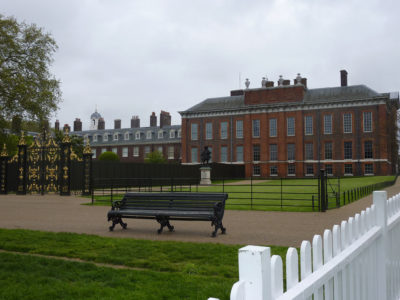 Anyway, Lucy then returns to the real world and things play out pretty much as you would expect, however no sooner have Peter, Susan and Lucy left the Wardrobe room following their conversation, then you get the second of the two significant cuts to the real world scenes where you have Edmund enter the Wardrobe straight away for the first time (he’s attempting to prove Lucy wrong) without even any implied passage of time elapsing between the two events. As with the earlier cut of real-world material, this probably proved to be a sensible decision for the sake of keeping things moving along, and whilst it thus appears at first that Lucy hasn’t even entered Narnia for the second time, she does then reappear in Narnia at the end of Edmund’s encounter with the White Witch just as she does in the book, so i guess you just have to use your imagination regarding her lack of a literal wardrobe entrance here.
Anyway, Lucy then returns to the real world and things play out pretty much as you would expect, however no sooner have Peter, Susan and Lucy left the Wardrobe room following their conversation, then you get the second of the two significant cuts to the real world scenes where you have Edmund enter the Wardrobe straight away for the first time (he’s attempting to prove Lucy wrong) without even any implied passage of time elapsing between the two events. As with the earlier cut of real-world material, this probably proved to be a sensible decision for the sake of keeping things moving along, and whilst it thus appears at first that Lucy hasn’t even entered Narnia for the second time, she does then reappear in Narnia at the end of Edmund’s encounter with the White Witch just as she does in the book, so i guess you just have to use your imagination regarding her lack of a literal wardrobe entrance here.
The Edmund/White Witch scene itself was also really good and pretty much exactly as you would expect from the book. They made good use of the arena lighting and white smoke effects emanating from the stage to create an eerie winter-like atmosphere for Jadis’ first appearence. I was getting into the whole interpretative style of the production by now, so really liked the way her sleigh was visualized, made up out of several performers holding various antler and sleigh prop elements, and making good use of the rotating ability of the stage surface to simulate movement. I have to say I also rather quite liked the White Witch’s performance here. It was perhaps closer to Barbara Kellerman in the BBC series than it was to Tilda Swinton in the Walden movie, as the nature of theatre seems to dictate the need for much “bigger” performances, since you can’t really get away with the sort of subtly in performance on stage that you perhaps can on film, but i would say she wasn’t as over-the-top as Kellerman’s “pantomime villain” type of performance. Also in this scene was Ginarrbrik (the programme used the dwarf name invented for the movie, though i don’t think they actually used it within the show itself) who was also quite good. He had a sort of Russian accent and had quite a few comedic lines that went down well with the audience. He and the Witch also had a song here, and whilst i can’t recall the details of it, I do seem to remember it being better than the first song.
So anyway, after both Edmund and Lucy return from Narnia, we get the first and perhaps only extended scene set in the real world. Thankfully it’s the one scene that matters the most, being the conversation between Peter, Susan and the Professor. Whereas in the Walden movie this entire conversation was cut down to a few lines of dialogue to save time, thankfully we get pretty much the full thing here, which for me vindicated the decision to cut down on the previous real world scenes earlier on.
After this we cut back to Narnia where we see Tumnus being arrested by Maugrim and the other wolves. I was a little confused when i first saw Maugrim, since he only had fur on his lower half, which made me think he was supposed to be another faun, but as soon as he gets talking you realize who he supposed to be (incidentally, they achieve the effect of him walking on all fours by having him sort of hunched over with a pair of bone-like crutches to support him). This was not however the first (or last) time that the costuming initially confused me. In several of the earlier scenes there had been a handful of costumed actors lurking on the periphery of the stage who never seemed to actually get on, or even be part of the scene. It took me a while to realize that they were actually the band, and were playing live music on the clarinet and the accordion to accompany the dramatic moments of each scene, and thus despite being costumed they were not actually supposed to be physical protagonists within the scene itself. It also took me a while to realize that their costumes were respectively supposed to represent a Fox, a Squirrel and a Hedgehog (i will come onto the general interpretative-visualization format of the costumes a bit later)
So as the Maugrim/Tumnus scene plays out, Lucy suddenly appears and starts to wander across the stage. Again i was slightly confused by this at first, but when it became evident she wasn’t actually interacting with the other characters (and given my earlier realization about the nature of the costumed band members) it was fairly easy to work out that this was supposed to convey some sort of dream sequence, and sure enough as soon the Narnian characters disappeared from the stage and the other three children appear, we learn that Lucy has been sleep walking and having nightmares.
Again the play wastes no time dwelling in the real-world and it’s pretty much straight back into Narnia. In this version however, the set-up for their third and final journey into the wardrobe involves Edmund kind of playing along with Lucy’s protestations about her nightmare being real, and about her being able to hear the shouts and cries of Mr Tumnus. Edmund urges them to flee into the Wardrobe to evade the eerie sounds, and thus in this version it seems to directly imply that Edmund is deliberately luring them into the Wardrobe this time (as per his earlier instructions from the White Witch) rather than it simply happening by chance circumstances, such as in the book where they are evading Mrs Macready and her tour group, or in the movie where they are running away after the cricket ball incident.
We now have all four children into Narnia for the first time, which is perhaps as good a time as any for me to comment on the performances of the four lead children. The first thing to note was that all four seemed to me to be fairly old (at least older than their book counterparts) though I guess that is to be expected of a theatrical production where it would be impossible to have the same children performing every night due to labour laws and such. Equally though it guarantees you a strong and confident performance from all four of your lead characters that you might not be able to demand of younger performers, and all four were excellent.
So things continue with the story and they head to Mr Tumnus’ house where they read Maugrim’s note and such. I can’t recall the precise order of things, but i think that then after meeting the Robin (here represented by an interpretative dancer twirling about the robin on the end of a piece of ribbon) and before (or perhaps after) meeting Mr Beaver, that it then implies the children get lost in a blizzard and find themselves on top of a frozen lake. “Oh no!” I was thinking at this point. “Please don’t tell me that they have borrowed the cheesy Frozen Waterfall sequence from the movie!”. Thankfully this wasn’t the case and it was merely a very short moment which involved Edmund briefly falling through the ice (i.e. a hole in the stage concealed by the use of the earlier mentioned white smoke effects) before being pulled back out and making Edmund even grumpier than usual (coupled with a clever effect of having Edmund spitting out water when he re-emerges from beneath the stage).
Anyway, on to Mr Beaver. By this time i was a lot more in-tune to the interpretative style of the costuming, which I will try to describe to you. Mr Beaver for example is dressed in the style of a traditional Eskimo-like outfit, except that his hood has details evoking the style of a Beaver’s head (ears, eyes, etc) and he has some additional wood-like framework around his legs representing the larger dimensions of a beaver’s lower-half. If i were to compare the style of costuming to anything, it would be to the Lion King stage musical (from the photos I’ve seen of it at least) which has the characters dressed in traditional African costuming, but fused with design elements of lion-like appearance to form a symbolic representation of a lion, rather than trying to directly mimic a realistic depiction of the animal. So here, Mr Beaver was similarly conceptualized in the style of an Eskimo and the aforementioned musical Fox was in the style of what i would assume to be traditional Russian winter attire (hence my earlier initial confusion at his appearance). Although my personal tastes would usually be towards the literal rather than the interpretative, i would have to say that using this style of costuming was probably a sensible decision, as it avoids the problems of trying to create anatomically correct creature costumes such as the BBC series attempted but which just ended up looking ridiculous, and it allows you to focus more on the general essence of the character’s nature instead.
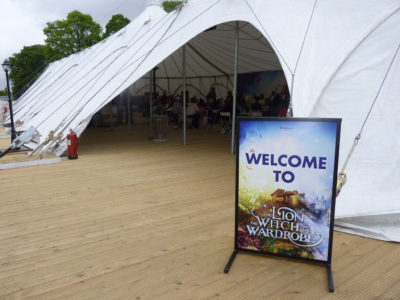 So the children then head off with Mr Beaver to his Dam and we get another song as we go. This song was by far the most “Musical” like of all the songs so far. It had a very catchy memorable tune, and a big sing-along type chorus. It even had Edmund doing the sort of “anti” lines to the song, such as you might expect from a classic Disney musical number (think Rowan Atkinson’s lines in the Lion King movie’s “I Just Can’t Wait To Be King” song). Of all the songs it was the one you would most closely associate with the sort of Andrew Lloyd Webber style musical theatre format, but equally it was perhaps one of my favorite songs from the show.
So the children then head off with Mr Beaver to his Dam and we get another song as we go. This song was by far the most “Musical” like of all the songs so far. It had a very catchy memorable tune, and a big sing-along type chorus. It even had Edmund doing the sort of “anti” lines to the song, such as you might expect from a classic Disney musical number (think Rowan Atkinson’s lines in the Lion King movie’s “I Just Can’t Wait To Be King” song). Of all the songs it was the one you would most closely associate with the sort of Andrew Lloyd Webber style musical theatre format, but equally it was perhaps one of my favorite songs from the show.
We then arrive at Mr Beaver’s dam and meet Mrs Beaver (similarly attired in traditional Eskimo-like dress), and as with previous scenes the dialogue proceeds pretty much as you would expect from the book, just with the addition of another song featuring Mr and Mrs Beaver about something or other. I quite liked the portrayal of the Beavers, especially Mr Beaver who had a booming Brian Blessed type voice which i found quite amusing.
The next scene has Edmund walking to White Witch, grumbling to himself as he goes (Edmund was suitably bratty and Edmund-like throughout) and they again makes good use of the revolving strip on the theatre floor to simulate travel. We arrive at the frozen statues (performers in frozen poses rise up from holes within the stage) and once again meet Maugrim, followed by the White Witch and Ginarrbrik again. I think again there was possibly another song here.
Meanwhile the Beavers and children flee the dam, and hide in the secret place (again none of the additions or changes made to the mid-section of the story in the Walden movie are present here) after which of course Father Christmas appears! Leading up to this moment i had been worrying about whether or not they might cut him, but ironically when he did then appear it actually felt more odd than not, as here we were in the middle of May (not that it’s been the most glorious of May weather so far I’ll grant you, but it was May none the less) and yet there was Father Christmas on stage seemingly seven months and a couple of seasons too early. Luckily any awkwardness of the moment was quickly disarmed by having Susan make a rather knowing joke about the particular month of year (almost with a wink to the audience) to which Father Christmas gave quite an interesting retort about Christmas coming when it is needed not when it is expected, which i thought was a nice way to handle things.
Father Christmas himself was dressed in a fairly traditional red-and-white costume, with design elements evoking the original pagan version of Father Christmas implied in the book. He also had something of a Norwegian accent, which reminded me of what Andrew Adamson said about his interpretation of Father Christmas being like “an old Norse Warrior returning from battle” (or something like that). All in all though he was very much unashamedly Father Christmas, unlike say in the movie where they seemed to try and downplay that whole element and didn’t even reference him by name. But anyway, Father Christmas gives the children their gifts (including Peter’s lion-less shield which i mentioned earlier) and i think we then get another musical number to close the first half of the show.
The Show – Part 2
The first half of the show lasted for 1 hour, after which there was a 20 minute interval (the second half also lasted 1 hour, bringing the total runtime up to 2hours 20mins). Towards the end of the interval, yet before the second half began, a rabbit came out onto the stage and started setting up a picnic in the middle (this rabbit like all the animal creatures was dressed in human costume, but with wood-like appendages representing his animal elements, in this instance a pair of large rabbit ears). I was initially slightly confused as to why he was setting up the picnic during the interval, and whether or not this was even considered to be part of the show, but delightfully as the second-half then opens, we begin with the aforementioned rabbit along with the fox, rabbit and hedgehog musicians from earlier having a party, singing songs, dancing and playing their musical instruments! Such is the influence of the movie that i had almost entirely forgotten about this scene from the book, and it was wonderful to see it reinstated here.
After the Witch has gatecrashed their party and turned the fox into stone, i think we then go to the remaining Pevensies’ arriving at Aslan’s camp and we get to meet Aslan for the first time, though there was also an additional sequence at some point which featured a Phoenix and another bird like character doing some aerial acrobatics, whilst a third sang an opera-like song. I think this sequence was supposed to be a visual metaphor for the arrival of Spring, so i would guess it probably occurred sometime around this point though i don’t recall precisely when.
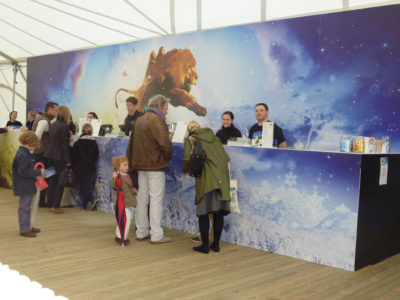 But anyway, the most important thing at this point of the play was the first appearance of Aslan! The construct of Aslan himself reminded me of the stage production of Warhorse (at least i the photos I’ve seen of it, as like i said before i never really go to the theatre) in that he resembled more the wooden framework of a lion than an actual lion. He was operated by three people, and once you tune-out their presence and focus simply on the lion itself, it’s really quite impressive in the way he appears to move around. Aslan himself is styled in the same manner as most of the other creatures, which all have a very tree-like earthy quality to them – his legs for instance looked like they were the twisted branches of trees, and his mane was comprised of twigs and leaves. Before the show i would of probably preferred to see a more life-like Aslan, with golden fur and all, but i think the style they had used for Aslan here worked well with the entire visual aesthetic for Narnia they had been developing throughout the play. One of the reasons i like the Prince Caspian movie over the LWW movie is that the Narnian world feels much more earthy and real in Walden PC than it does with the overly clean and colorful depiction in Walden LWW. So here, they managed to generate that same sort of feeling of Narnia as a very real earthy sort of place, just by clever use of the wood motif that ran through all the costumes.
But anyway, the most important thing at this point of the play was the first appearance of Aslan! The construct of Aslan himself reminded me of the stage production of Warhorse (at least i the photos I’ve seen of it, as like i said before i never really go to the theatre) in that he resembled more the wooden framework of a lion than an actual lion. He was operated by three people, and once you tune-out their presence and focus simply on the lion itself, it’s really quite impressive in the way he appears to move around. Aslan himself is styled in the same manner as most of the other creatures, which all have a very tree-like earthy quality to them – his legs for instance looked like they were the twisted branches of trees, and his mane was comprised of twigs and leaves. Before the show i would of probably preferred to see a more life-like Aslan, with golden fur and all, but i think the style they had used for Aslan here worked well with the entire visual aesthetic for Narnia they had been developing throughout the play. One of the reasons i like the Prince Caspian movie over the LWW movie is that the Narnian world feels much more earthy and real in Walden PC than it does with the overly clean and colorful depiction in Walden LWW. So here, they managed to generate that same sort of feeling of Narnia as a very real earthy sort of place, just by clever use of the wood motif that ran through all the costumes.
As for Aslan’s voice, I had listened to a few clips from the FOTF radio theatre productions beforehand to get a sense of what David Suchet’s infamous Aslan voice sounded like, and i have to admit i was slightly taken aback by the overly loud voice and weirdly disjointed way of saying things he uses in that performance. As for the dialogue present in the stage production, it was noticeably the same actor and even the same interpretation of the character, but apart from a few moments where the weird staccato rhythm was present in his speech, it didn’t seem as odd and out-of-place as it did from the limited FOTF clips i had listened to beforehand.
Anyway, the story continues to move on as you would expect with Maugrim arriving to die by Peter’s sword and Peter accordingly being knighted by Aslan. Several of the creatures in Aslan’s army (including a really awesome Centaur) are sent after the remaining fleeing wolves to go rescue Edmund, and we get another nice little moment from the book which got chopped from the movie in which the Witch and her Dwarf disguise themselves as a rock and a tree stump to avoid capture. Again, it’s not much, but its always really nice to see the little moments like this that didn’t make it into the movie being brought to life here.
From there it’s back to Aslan’s camp with Edmund, who has his conversation with Aslan, before the Witch’s dwarf appears to deliver a message to Aslan prior to her arrival. As with many scenes, there are lots of tiny moments and lines of dialogue which are word-for-word from the book. The latter half of the conversation between Aslan and Jadis takes place in some sort of ancient sounding language (presumably to hide from the audience the nature of the deal that they agree upon) which was quite a nice little touch. After this we get Lucy and Susan walking with Aslan, which leads up to one of the best sequences in the entire play, the Stone Table scene.
I have to say the entire stone table sequence here was fantastically realized – the use of lighting and projections helped create a suitably creepy atmosphere, and small flame generators within the floor of the stage start to shoot out spurts of fire, and the dancing of the creatures and the style of the music here takes on a sort of ritualistic tribal style, with a rhythmic drum beat and the lyrics to the song being in the aforementioned ancient sounding language. It all combines to really capture the mood of the moment and was actually kind of scary looking (i did notice a few small children fleeing for the exit with their parents at this point!).
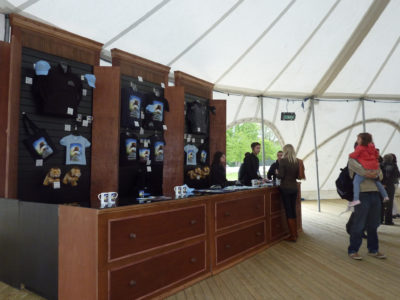 A quick note on the music here: It seemed to me to be the case that most of the songs in the second half of the play were much more organic to the situation of the drama than the more conventional musical-theatre-like pieces of the first half, which is perhaps why i haven’t mentioned the occurrence of as many songs in the second half so far as they didn’t stick out as much to me, but rather blended in more with the drama, but i think that in the end there was probably about an even number of songs in both halves – around 4 or 5 each.
A quick note on the music here: It seemed to me to be the case that most of the songs in the second half of the play were much more organic to the situation of the drama than the more conventional musical-theatre-like pieces of the first half, which is perhaps why i haven’t mentioned the occurrence of as many songs in the second half so far as they didn’t stick out as much to me, but rather blended in more with the drama, but i think that in the end there was probably about an even number of songs in both halves – around 4 or 5 each.
So anyway, the giant stone table is wheeled out into the centre of the stage whilst the evil creatures continue their tribal dance around the stage and the white witch (dressed in black as per the movie) sings her evil sounding song. Aslan then enters, draped in a ritualistic cloak by Ginarrbrik, and comes to rest on the stone table where he is suitably bound and shorn of his mane (despite it being made from twigs and leaves). After Aslan’s death (again excellently played out) Susan and Lucy return to free Aslan from his binds, but the way they then get Aslan to disappear from the stone table right before you is really rather impressive (hint – the cloak i mentioned before helps with the illusion, but it’s still a pretty clever effect ). No sooner has he disappeared then Aslan swiftly comes bounding back onto the stage looking really rather awesome.
Another excellent sequence then follows this where the two girls ride on Aslan’s back to the White Witch’s castle. Given the construction of Aslan as merely the wooden framework of a Lion i was wondering how they were possibly going to perform this scene (or if they were even going to do it at all, despite it forming the central image of all the show’s marketing) but sure enough they did. The two girls are hoisted up on cables from the roof, and then gently lowered onto Aslan’s back to create the illusion that they are sat there (despite all their weight obviously being supported by the cable). Another aspect of the show’s format that i haven’t really mentioned yet, which was excellent throughout but particularly well implemented in this sequence, was the use of the 360 degree projections. As most of the scenes feature only a limited number of props and there are no real sets to speak of, the scenes are established by the use of animated backdrops projected out from the stage onto the sloping walls of the tent itself, creating a really immersive experience. So for example, when we were out in the snowy woodlands of Narnia earlier on the walls are projected with the images of trees and falling snow. When we reach Tumnus’s cave they transition into a reddish stone complete with Narnian cave paintings (one of which comes to life during Tumnus’ lullaby) and when we enter Aslans’ tent to see Peter talking with Aslan, stiches start to form up and the interior of a Narnian tent is hoisted up around us. It’s really quite a neat way to do things. Anyway, in terms of the girls riding on Aslan, the three-man lion runs on the spot at the centre of the stage, with the girls perched atop him, whilst the projections provide the sense of movement, taking us racing along through the hills and forests of Narnia into the snowy area still surrounding the witch’s castle. Whereas as the earlier scenes the projections merely help establish the setting or the tone of the scene, here they are used to create a sort of simulator-like effect which works really well.
We then get onto the freeing of the statues, including the return of Mr Tumnus, and then the appearance of another character unfortunately short-changed in the movie adaptation – Giant Rumblebuffin! The way that Rumblebuffin is visualized here is borderline crazy! He’s like a regular sized man inside a large wooden frame supporting a giant head and a single giant hand! It looks totally surreal, but it kind of works with the crazy nature of the character and his dialogue, so just about comes together as a representation. However, the scene with Rumblebuffin smashing down the castle gates then kind of seems to end abruptly with a bit of an awkward cut to the battle which is going on, but the battle itself is again fantastically realized, with lots of acrobatics on the ropes and stunt performers performing flips on the ground, fighting interweaving with the choreographed dancing to represent the combat, and all accompanied by music which is suitably grand and epic. All the crucial beats of the battle occur as you would expect – Edmund smashes the wand, Peter duels with the witch, and of course Aslan finally roars back onto the stage to kill the Witch to rapturous cheers and applause from the audience.
As with the introductory scenes at the beginning of the play, the epilogue material at the end of the story is dealt with in a fairly swift, but not overly brief manner, which means that the play doesn’t drag on for too long after the climactic moment of Aslan killing the Witch, but does find a rather neat way to incorporate the whole growing old in Narnia element really nicely. What begins as Lucy delivering a monologue about how they went on to grow old, transitions to the other Pevensies joining in, talking about their coronations. Meanwhile four older Pevensies appear in the four corners of the audience and make their way onto the stage where their crowns are passed to their younger counterparts (or perhaps the other way round). It’s really quite a nice symbolic moment and a great way to incorporate one of the more difficult plot elements of the book. An elderly Tumnus then comes onto the stage to announce the appearance of the White Stag, and we head off back to the Lampost and the Wardrobe, which rises back up from the centre of the stage around the four children. They exit back through the doors and the professor appears to wrap things up in his usual manner.
In a final lovely moment which brings the play back full-circle in a rather poetic manner, we have Lucy putting the Professors advice about not being able to get to Narnia via the same way twice to the test by starting of a game of hide-and-seek on her own at the centre of the stage as the lights go down. 1, 2, 3…. An excellent way to end a really great play.


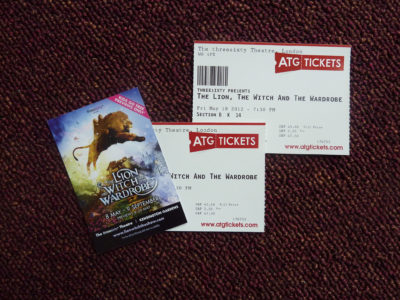
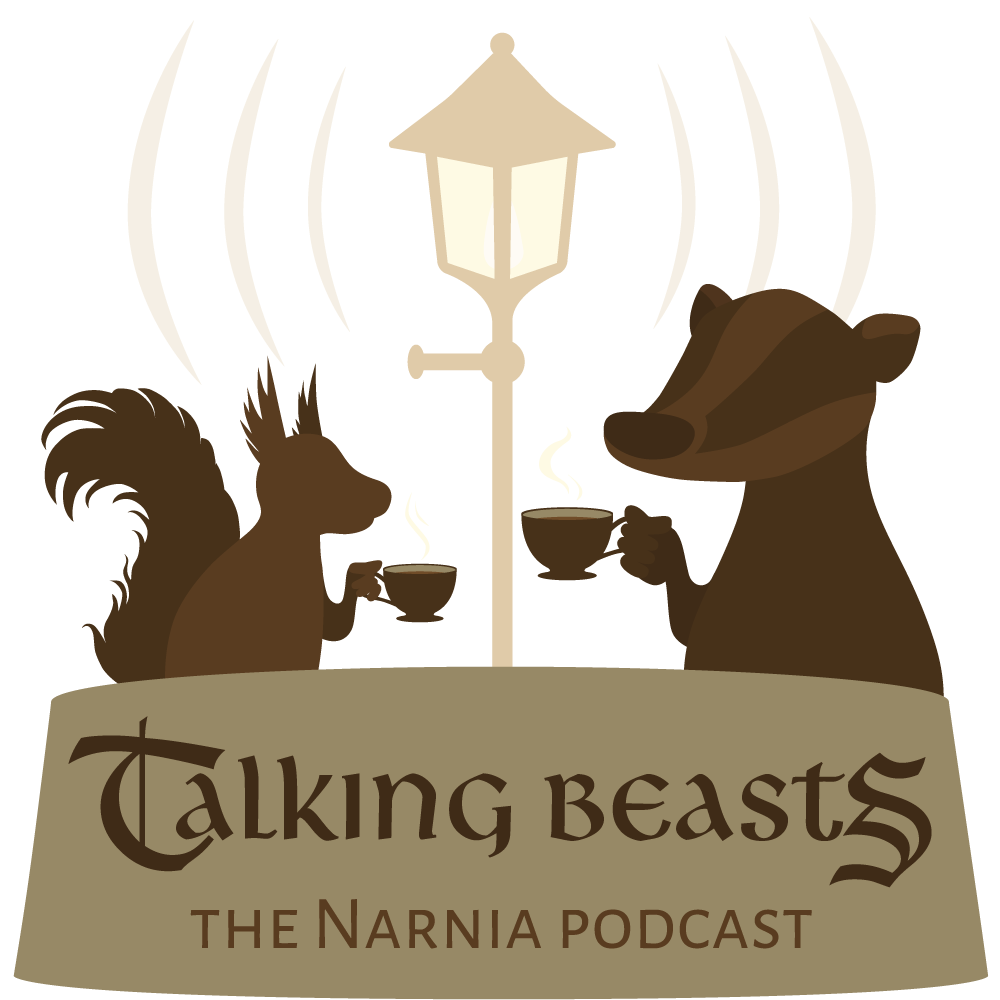
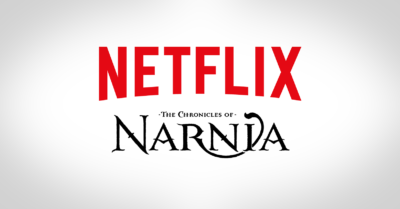

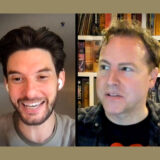
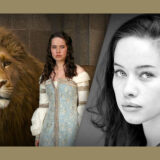
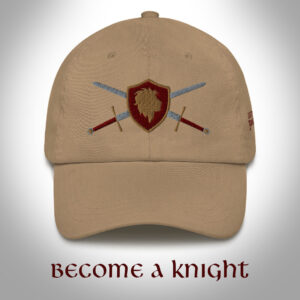
Sounds like a unique production and adaptation. I'd love to go see it.
I'm going to see it in June! I'm so excited!!!!! I am slightly disappointed with what I read about Aslan's voice, though. The problem is after hearing Liam Neeson's amazing voice nobody else is a good enough Aslan to me!
Icarus, I am on the other side of the world, so won't be seeing it, but I feel as if I have been sitting there with you, and have enjoyed it! Thank you for a very full description and your positive and helpful comments.
I agree fully. Thank you for saying that about Liam Neeson.
Quick note: I can't see the images when I click on them.
I saw threesixty's Peter Pan production last summer. It was very unique and I quite enjoyed myself. I feel that the very raw and simple stage, as well as the extra imagination required for the venue, lend themselves handsomely to the adaptation as those are features of all the Narnia books as well.
I just hope that it doesn't feel like one is at the circus because of the tent. I had that feeling the whole Peter Pan production and really hope LWW overcomes that obstacle. It's quite distracting and makes it feel more amateur than it perhaps is.
That would be neat to see 🙂
Wow, very good and detailed review! I wouldn't be able to go see it, but this was probably the next best thing 😀
I only disagree with your comments on David Suchet's voice. He has a very Aslan-like voice, rich and deep and so much better than Liam Neeson's voice (which doesn't even have a hint of a growl or any kingliness to it).
I will admit that singing in plays or movies is rather annoying. It always feels really fake and takes me out of the story; because you never have people in real life suddenly all bursting into song at the same random moment 😀 Anyways, thanks for the review!
Me neither!!!!!!!
Awesome review!!! Now I don't feel as bad not being able to see the play because I feel like I just saw it because of this review!
All the photos can also be found on my flickr account if you are interested in taking a closer look 🙂
http://www.flickr.com/photos/8122966@N08/sets/72157629800362646/
Weird. Should be fixed now.
I heard that the director was going to remove the 1940s' area and replace it with modern times. Is that true?
I got to see them. Just double click the image and it should come up! =D
Thats really cool! I'd love to go see it.
Not at all. Whilst there is very little of the real world scenes, it is still most definitely a 1940s period piece, due not only to the costuming of the four children but also to all their original old-fashioned dialogue which remains in tact here.
Really wish I was across the pond so I could go see this. 🙂 As a theatre & film student it sounds fascinating.
Wow! I really wish I could see that!
*sigh*
I wish there was more news about Narnia movies instead of "Play" news. I mean it sounds nice but it makes me feel so…sad. And hopeful in a way.
Thanks so much for the very detailed review!!! I really appreciate your sharing the whole experience with those of us who can't make it to see it ourselves 🙂
Yeah, I loved to see it too.
Maybe, like Phanton amd Les Mis, this will come to America. Maybe. Please. *gets down on knees* Please! I beg of ou! Come to America! It sounds so wonderful! That… or I get a passport.
Here Here!
Excellent review. I went to watch it on Saturday. I tried to write as detailed a review myself (I had refrained from reading yours until mine was done) but settled for something simpler. So my hat goes of to you for your description, considering I know how hard it is to describe scene by scene. You described the costumes really well (one of the things I struggled with the most). The only change which they seem to have made since the previews is that the four grown-up Pevensies come on stage from the back rather than the four sides. Also, I would have called Father Christmas' accent "Scottish".
I'm seeing it in a couple of days i'm from canada, but it will be worth it
That's really cool. Hopefully more people here will get the chance to see it soon.
The four children did enter from the back when i went to see it, i just meant that after they did get onto the stage they then went out to stand in the corners amongst the audience (except for Lucy that is).
Narnia is Alive… FOREVER.
Am looking to book tickets, but want to make sure the kids aren't facing the back of the wardrobe as you mentioned!! Which area did it face if you can remember? Many thanks for your help and top review
The main entrance onto the stage where all the characters emerge from is between Block AA and Block F. The wardrobe doors faces towards Block C. Given the 360 degree nature of the production though I think all the views will have their various advantages. 🙂